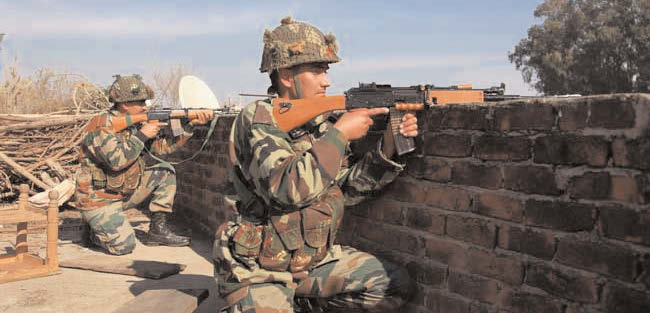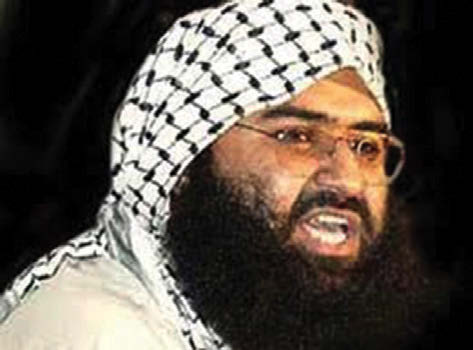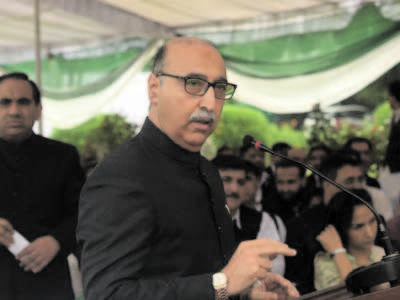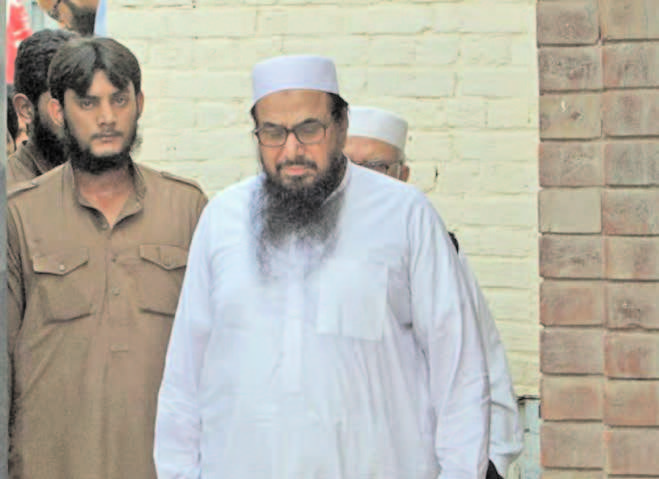
PATHANKOT (TIP): The Indian Army countered growing criticism of the NSG-led operation against the terrorist infiltration and attack at a Pathankot airbase with the the GOC-in-C, Western Command, Lt Gen Kamal Jit Singh Wednesday calling the operation a “complete success” but both local and global headlines tell a different story.
Military analysts weighing in on the Pathankot attack are calling India‘s response to the attack “amateurish” and a “near fiasco”.
“Four days to neutralise no more than five or six militants is unacceptable in a confined open space where there is little or no scope of any civilian collateral damage,” the BBC quotes a military analyst as saying.
The Indian Express nuances the criticism on time cost, saying that forces elsewhere in the world have taken longer to terminate operations in smaller areas. The glaring holes, though are in planning, command, training and equipment, says the report. The Express report signs off on a chilling note: “In practice, that meant all potential targets in Pathankot were expected to ensure their own perimeter was secure until they were assaulted by terrorists, in the kind of dramatic frontal assaults fidayeen units have often staged elsewhere in the country. This assumption was where things went wrong.” For his part, Lt Gen Kamal Jit Singh told a media briefing in Chandi Mandir that the decision to deploy NSG was a multi-pronged one. “There was NSG, Air force, Garud commandos. Application of NSG was a joint decision taken at an appropriate level which included service chiefs,” He said that the operation was a “complete success” which saw “synergy” between the NSG, Army and Air Force.
There has been criticism of the decision to deploy the NSG personnel flown from Delhi on Saturday morning in the air force base in Pathankot when a larger number of army commandos were available in nearby garrison in the border city itself. Army’s special forces commandos were said to be better equipped to deal with the siege.
Lt Gen Singh said terrorists holed up in buildings in the air force station took “advantage” of that location which took time in eliminating them.
He said they also wanted to avoid a hostage situation as a large number of families and foreign trainees were residing inside the base.
“The buildings in the air force base station are such that which are located close to family quarters. The final group of two terrorists were in a two-storeyed structure where in the first our own troops were there. They (the families) had to be evacuated first and we had to avoid hostage situation because of that it took time.
“I also want to tell you that within these barracks, which are MES constructions they are covered with steel doors. It is like sitting inside a bunker and so the terrorists took advantage of it. The final body was recovered from inside of this structure,” said Lt Gen Singh.
Lt Gen Singh said “excessive” firepower was not used because of the presence of families in the quarters and civilians pockets in the area.
“The basic concept is to safeguard the strategic assets. We also follow a principle of calibrated use of force. We have too much fire power which cannot be used in this operation because there were family quarters and civilian pockets outside the air force base. This is why we used that much fire power which was required in that condition.
“For that we had to take risks. It took time….We had to localise them (terrorists) to a very small area and finally eliminated them. We were under instructions and it was our concept to avoid unnecessary casualties. We took calculated risks so as not to have unnecessary casualties,” he said.
“There are strategic assets here and there can be hostage situations as there are 11,000 people live here and 3,000 families, and above all, foreign trainees and had there been any hostage situation, it is NSG which is specially trained to rescue them,” he said.
Lt General said that it was the success of this operation that the Air force station was operational. Had there been any damage to the airport, how could we have brought NSG here?” he asked. “NSG was brought in because firstly strategic assets were over here. Secondly there can be hostage situation. People were living inside the campus which could have taken hostage…NSG are special troops (to handle such situation).” “We got information on 1 January during the afternoon. It was a serious alert as we were told that six-eight (terrorists were there),” he said.
To a question about the source of the alerts, Lt Gen Singh said, “We got alert from Punjab Police also and from Central agencies.”
He said the alert issued by Punjab Police on 30 December was very general which said that 15 militants had entered into the Indian territory. On reports about Punjab Police’s lapse in Pathankot terror attack, he said, “I will not comment on it. It is a subject matter of inquiry.”
“We had initially report of four-six militants and then we made contact with six of them and all of them were eliminated,” he said.
Asked whether there could be any local support to terrorists, Lt Gen said, “Some localised support cannot be absolutely ruled out. It will all be looked into. NIA will look into it. All aspects of this case will be looked into.”
Asked why terrorists struck at the air force base, Lt Gen said, “It is strategically important. Imagine the kind of publicity you can gain that you have targeted strategic air base. Secondly it is in the vicinity. It is easy to reach here. It is only 25 km from the area.”
On asked about potential hostage situation when terrorists attacked Pathankot air force base station, he said, “It could have developed into a hostage situation. In any case, all along the operation, there was a great possibility of taking a hostage situation because there are air men living in those barracks/residential area. “They were brought out by army columns, NSG officials. They were brought down from the windows,” he said to a question how two of militants were eliminated.
When asked whether army started any combing operation between the period of getting first alert and attack by terrorists, he said, “Combing of those areas was the primary the responsibility of police. We had to ensure security to our strategic assets. Area was checked out and QRT was in place. Air Force also carried out searching for terrorists,” he said. To a question on militants’ bodies, he said, “There are four bodies of militants. Two have been cooked up. Some parts of bodies were scattered around there which are being forensically examined. The other four bodies which are recovered a call will be taken whether to destroy them or not because they were carrying explosives.” Asked about the cordoning off of Tibri in Gurdaspur, he said, “There is some information. Police and army were looking into it. Every day there are two or three cases of such information…it is being checked out.” “There was no collateral damage during the operation. We all must take into account that there are a large number of civilian pockets in that area. No collateral damage was caused to civilians pocket and villages which is in its vicinity (of air force base station).
“More importantly there were 23 foreign trainees from four friendly countries at air force base station. No one was harmed,” he said, adding that this operation was a “complete success”.
The foreign trainees are from Myanmar, Nigeria, Sri Lanka and Afghanistan.
“After getting alert about terrorists, a large number of pre-empt action were taken. We sounded red alert. QRT were sent to important places. That is because our reactions were timely (to the attack) and after immediate contact with terrorists, they were localised,” GOC-IN-C Western Command said.
“We even side stepped some resources. Some specialised resources like specialized forces, mine-protected vehicles. They were centrally located and they were side stepped,” he said.
“Now combing operations and sanitization are currently on and after sanitization is over, the assets will be handed over to the air force,” he informed.
He said out of nine columns of the Army, seven were used inside the air force station while two were kept outside. “A bomb disposal team, a dog squad and there were nine mine-protected vehicle were there,” he said.
“Such operations require turnover. You are under a live situation, so a turnover was carried out and due rest was given.
“Currently, we have two columns, two mine-protected vehicles and bomb disposal teams is inside the station which is helping the combing and sanitization operation,” he said, adding.





Be the first to comment